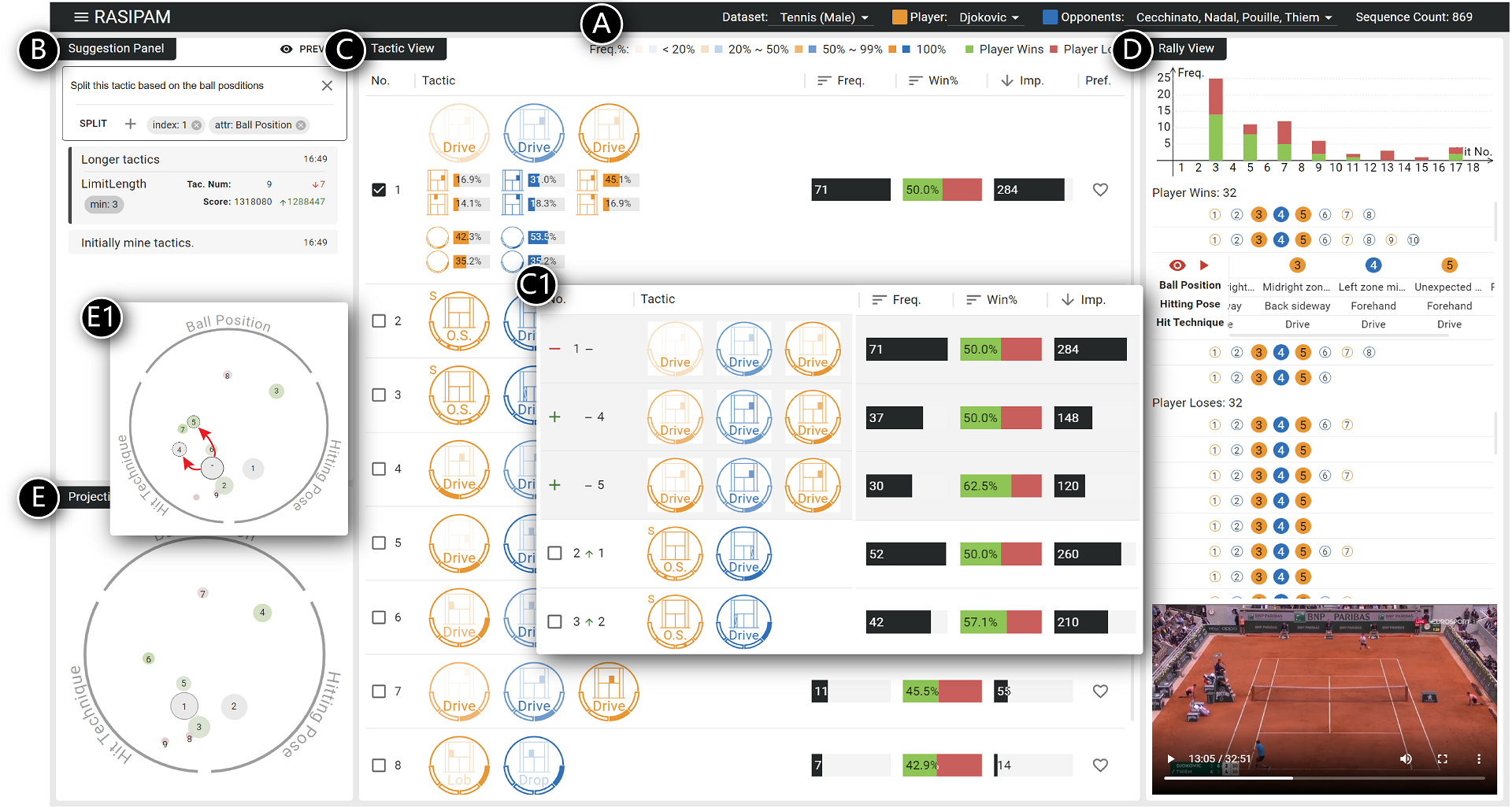RASIPAM: Interactive Pattern Mining of Multivariate Event Sequences in Racket Sports
Jiang Wu, Dongyu Liu, Ziyang Guo, Yingcai Wu
View presentation:2022-10-20T16:21:00ZGMT-0600Change your timezone on the schedule page
2022-10-20T16:21:00Z

Prerecorded Talk
The live footage of the talk, including the Q&A, can be viewed on the session page, Sports Vis.
Fast forward
Abstract
Experts in racket sports like tennis and badminton use tactical analysis to gain insight into competitors' playing styles. Many data-driven methods apply pattern mining to racket sports data — which is often recorded as multivariate event sequences — to uncover sports tactics. However, tactics obtained in this way are often inconsistent with those deduced by experts through their domain knowledge, which can be confusing to those experts. This work introduces RASIPAM, a RAcket-Sports Interactive PAttern Mining system, which allows experts to incorporate their knowledge into data mining algorithms to discover meaningful tactics interactively. RASIPAM consists of a constraint-based pattern mining algorithm that responds to the analysis demands of experts: Experts provide suggestions for finding tactics in intuitive written language, and these suggestions are translated into constraints to run the algorithm. RASIPAM further introduces a tailored visual interface that allows experts to compare the new tactics with the original ones and decide whether to apply a given adjustment. This interactive workflow iteratively progresses until experts are satisfied with all tactics. We conduct a quantitative experiment to show that our algorithm supports real-time interaction. Two case studies in tennis and in badminton respectively, each involving two domain experts, are conducted to show the effectiveness and usefulness of the system.